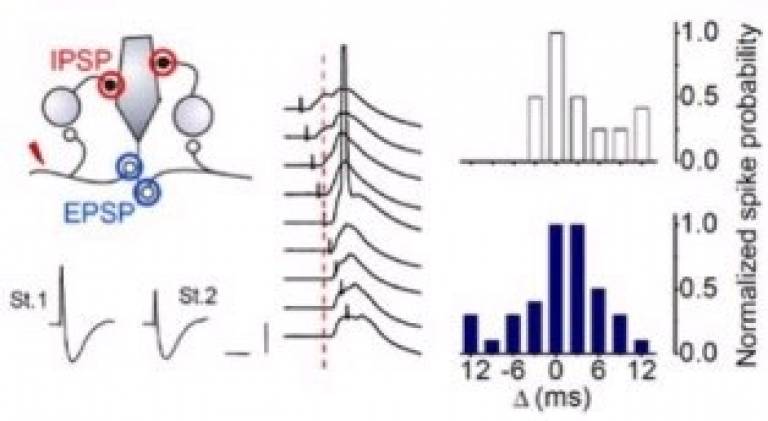Understanding how the brain determines coincidence
21 February 2011
Links
 ion.ucl.ac.uk/" target="_self">UCL Institute of Neurology
ion.ucl.ac.uk/" target="_self">UCL Institute of Neurology
Neurons in the brain are bombarded by incoming signals, and one of the challenges facing neuroscience research is to understand how the brain sorts this information.
One mechanism is to determine which inputs are coincident (ie arrive at the same time) and therefore presumably generated by the same or closely associated processes. In order to achieve this, the brain needs to be able to analyse inputs with millisecond precision.
Ivan Pavlov and colleagues at UCL Institute of Neurology have shown
in work published in Nature Communications (Nat. Commun. 2 : 199
doi:10.1038/ncomms1202 (2011)) that this precision is critically dependent upon
the presence of a particular ion channel, which determines the way in which
inhibition alters the voltage of neurons. Importantly, certain diseases such as
epilepsy can interfere with this process, possibly leading to a disruption of
cognitive function.
Reference (this may require subscription)
Nature
Communications. 2 : 199 doi:10.1038/ncomms1202
Ih-mediated depolarization enhances the temporal
precision of neuronal integration
Ivan Pavlov, Annalisa Scimemi, Leonid
Savtchenko, Dimitri M. Kullmann, & Matthew C. Walker
 Close
Close

